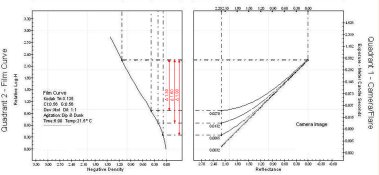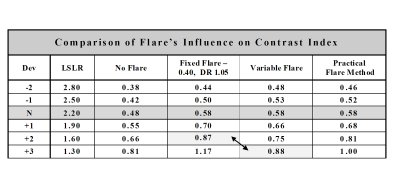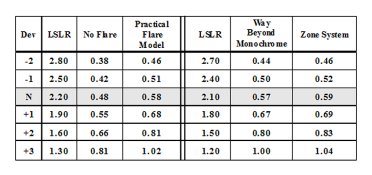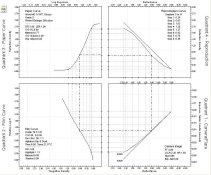Even though it is a construct won`t it work. At least in part.
Of course if works. That's not what is in question. It can lead to a misinterpretation of how the process works. Anyone viewing such a curve is required to be aware what it represents.
I see your Practical Flare Model is very close to the Way Beyond Monochrom numbers as well as The Zone System number.
Flare always seems to just get a footnote.
The results are close, but the variables are different. Only one of the three models use variables that describe reality. Both the Zone System and WBM basically use what Davis calls the effective density range. Problem is, neither explains this is what they are doing. My Practical Flare Model is derived by averaging the values from the fixed flare model and variable flare model. While the variable flare model has the potential to be the most accurate. Matching the NDR to the paper LER is less an indication of quality as the luminance ranges progressively increase or decrease. I believe my approach tempers the extreme ranges and tends to fit the preferred NDR to LER relationships.
However those flare numbers are difficult to swallow seeing how high they are.
That's the funny thing about facts, they don't care if you believe them or not. Seriously, before you judge, study up on the subject. What I believe you are referring to when you said 0.02 density increase is from the black box test described in BTZS. You appear to be confusing density increase from flare and the amount of flare. Also, I can't see the black box test as more of an exercise to create an impression of flare's effects and not an actual measurement. I did a similar black box test. Around the opening of the box, I place various targets, black, gray, checkerboard, and white. Below are the results. While there is a difference in density of 0.09 between the black target and the white target, the difference in exposure is 0.39 of 1 1/3 stops.
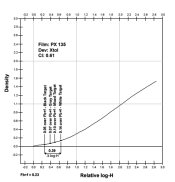
On page 94 of BTZS, Davis recommends adjusting the SI by 10% for the effective DR in order to compensate for flare. For a NDR of 1.05, 1.05 * 1.10 = 1.15. The gradient for a log 2.20 luminance range would then be 1.15 / 2.20 = 0.52. If we take the unadjusted NDR of 1.05 and apply it to a log 2.20 luminance range minus flare, how much flare would it take to to equal 0.52? 1.05 / (2.20 - 0.20) = 0.52 or 2/3 stop flare.
This is how flare really works.
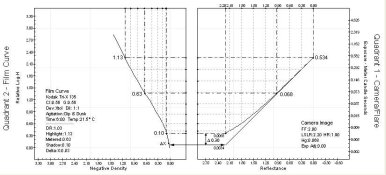
And for the Zone inclined:
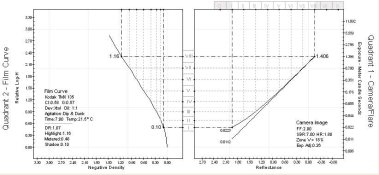
Here's an example of the effect on both the shadow exposure and the effective luminance range over a range of flare. In this example the no flare curve produces an effective luminance range of 2.20.
